Design / Milan
Made in milan
The city is no longer just a backdrop for the world’s design talent during the annual Salone del Mobile. It has reinvented itself as a place where young creatives can work, make and play. We meet the leaders of the pack.
Milan might not be Italy’s most beautiful city but it is certainly its most creative. While Italy’s economic hub had a tough 2020, its design studios continued to blossom, bolstered by an influx of international talent. Today, Valentina Ciuffi, founder of creative agency Studio Vedèt, leads us through an exhibition by fashion and design studio Older in Milan’s Castel Morrone area. The company was formed by Denmark’s Morten Thuesen and Italian Letizia Carami. They took their experience, acquired first at Alexander McQueen in London and then with their uniform brand (today operated in Milan), and applied it to making collectable design objects.

Valentina Ciuffi
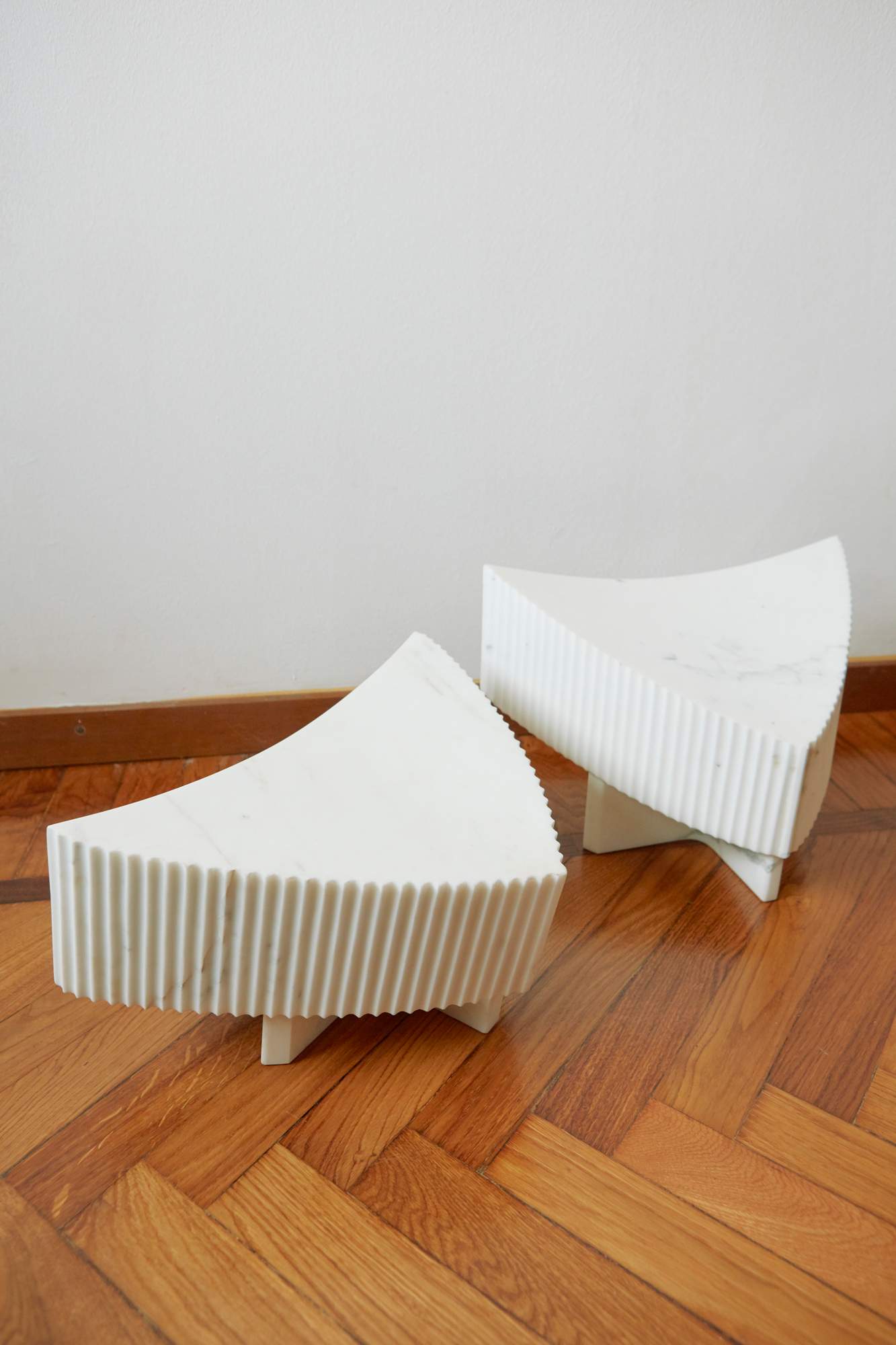
Gunnol marble lamps at Older
One key element of the limited-edition couches and lighting on show here is the fine technical Italian fabrics that the pair also use in their clothing. “You can be noisy and work, or you can be quiet and relax at home here,” says Thuesen of their spacious home-cum-gallery in a grand semi-inhabited building. But what’s most important for the couple, who recently relocated from Paris, is their proximity to some of the world’s best textile suppliers and furniture-makers. “This piece here is made in Meda, just outside Milan; those ones are made in nearby Carrara,” says Caramia, pointing out the various construction and finishing techniques behind the fine forms on display.
Part of Milan’s attractiveness for studio’s like Older is the fact that rents in Milan are more reasonable and there is more studio space on the city’s outskirts than in other larger metropolises. However, things were not easy in 2020. But its creative industries still managed to come out of the pandemic-dominated year on a high, with a miniature version of Salone del Mobile (the world’s biggest design week, typically held in April but cancelled in 2020) entitled Milano Design City, which took place in October. Showrooms and galleries came alive with exhibitions and furniture releases. With travel restrictions in place, it was a more local affair than Salone, yet the quality of what was on show did not dip – nor did the enthusiasm for it. “We believe that people want to meet, even if the meetings are more distant than usual,” says Ciuffi. “In Milan we really care about the live experience.”

Older’s Wide Eye couch, made in Meda

Studio Vedèt team
Ciuffi is a champion of the city’s new creative class and something of an unofficial curator of their output via her connections at Milan’s top design galleries. While more established industrial designers such as Patricia Urquiola and Piero Lissoni dominate creative direction roles in Milan’s global furniture brands (Cassina, Boffi De Padova and Living Divani, to name a few), the next wave of talent, which might soon step into their shoes, is blossoming. Ciuffi’s firm Studio Vedèt provides graphic design and branding work to many of the most notable new names, such as Joy Herro, Lebanon-born co-founder of experimental design platform The Great Design Disaster, and Canadian expat Nicolas Bellavance-Lecompte, gallerist and founder of collectable design fair Nomad. Yet Ciuffi’s relationship with these people goes far beyond business: she’s frequently introducing them to potential collaborators and new arrivals.

Joseph Grima
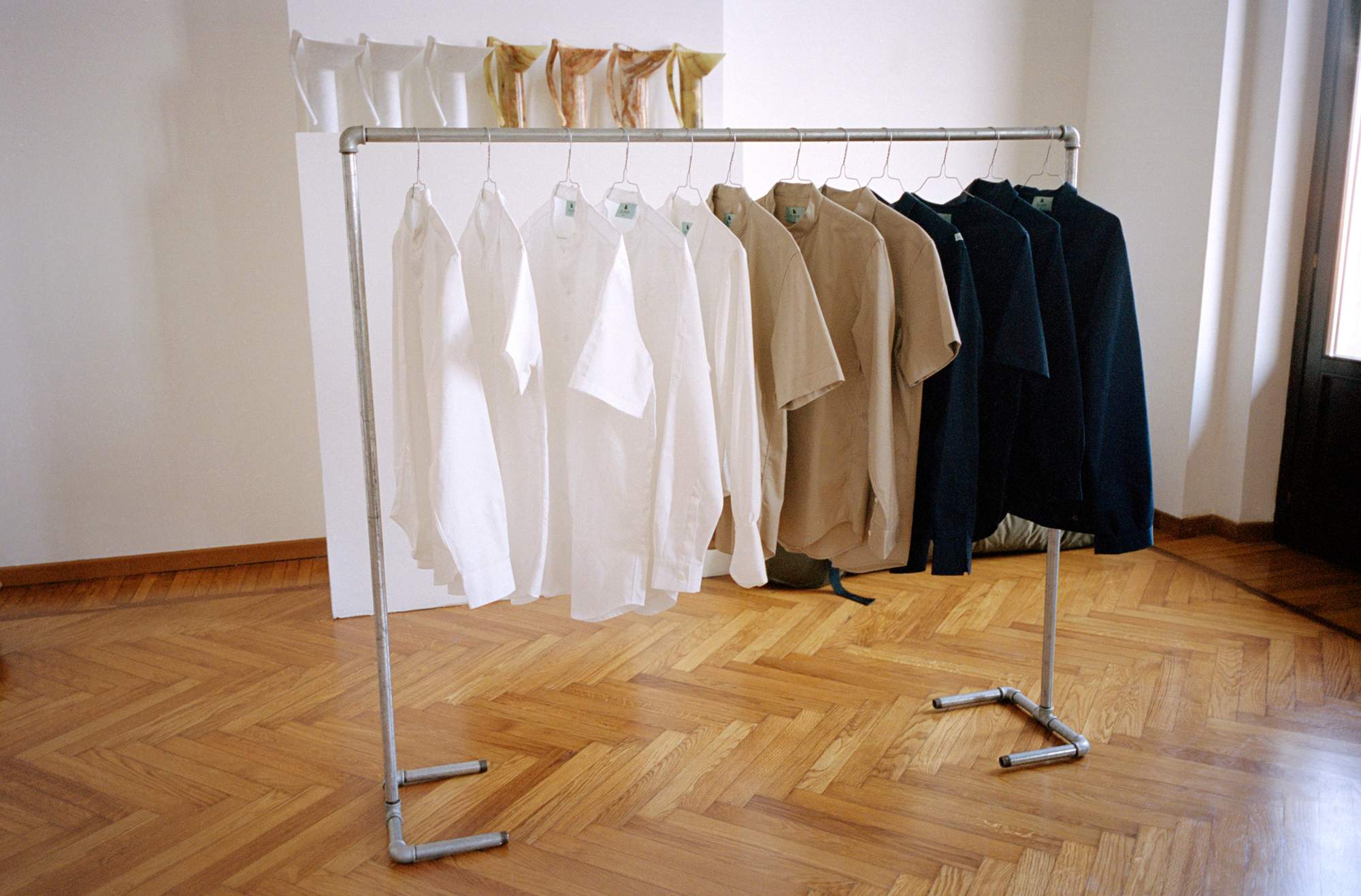
Older’s design and fashion products
This all-in-it-together mentality is what makes the new Milan scene so special. “Part of my studio’s business is related to curation and part of it to visual identity, helping brands with a certain charm to find their identity and find their way in the design world,” says Ciuffi. “But here, rather than having quick business meetings, you really have the time to sit down with one another, talk and enjoy the experience – and you naturally end up being friends.”
It’s a nice way to work. The informal restaurant dinners that Ciuffi hosts are raucous and, due to the mix of nationalities, largely in English but they also spawn creative collaborations between attendants: Ciuffi has already commissioned uniforms from her client Older. And Bar Basso – made famous for being the April Salone hangout of industry veterans such as Jasper Morrison – is now a year-round meeting place for this smart young creative set. “It’s 10 minutes away for most people by bike,” says Ciuffi.
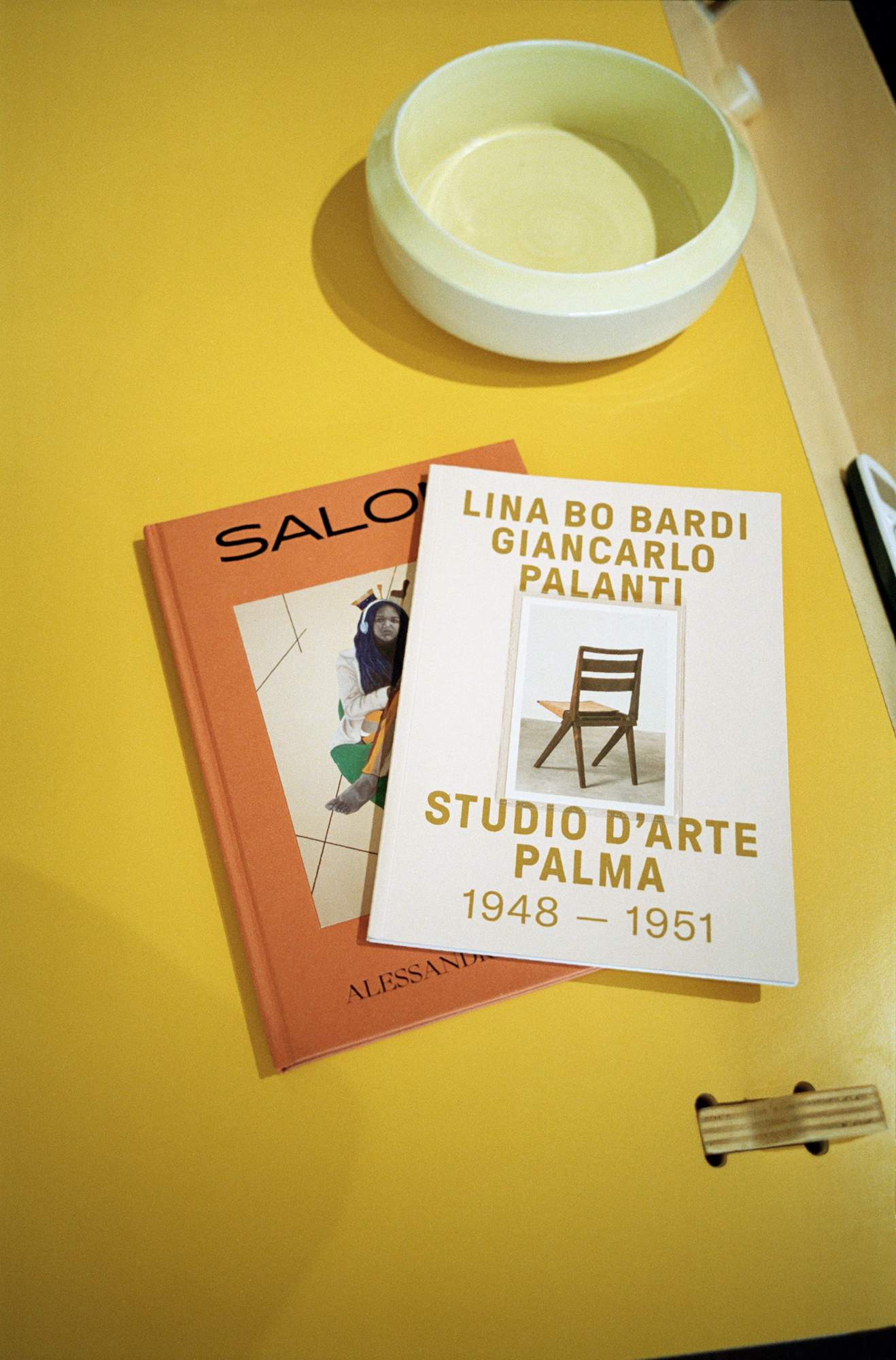
Works by Studio Vedèt

Joy Herro
While the city grows in appeal as a permanent destination for creatives, it is the April Salone del Mobile, which the organisers are actively pushing ahead with for 2021, that remains a focal point for every design studio, Milanese or otherwise. Ciuffi is responsible for one of Salone’s most coveted events: Alcova, a programme she curates alongside Joseph Grima that highlights interesting, emerging and more experimental designers. It’s a perfect platform for small studios that don’t have the means to form the grand spectacles of the larger brands. “I’ve worked all over but I always return to Milan,” says Grima, a UK national, as he prepares a caprese salad with tomatoes freshly plucked from the garden of the workspace he shares with Ciuffi.
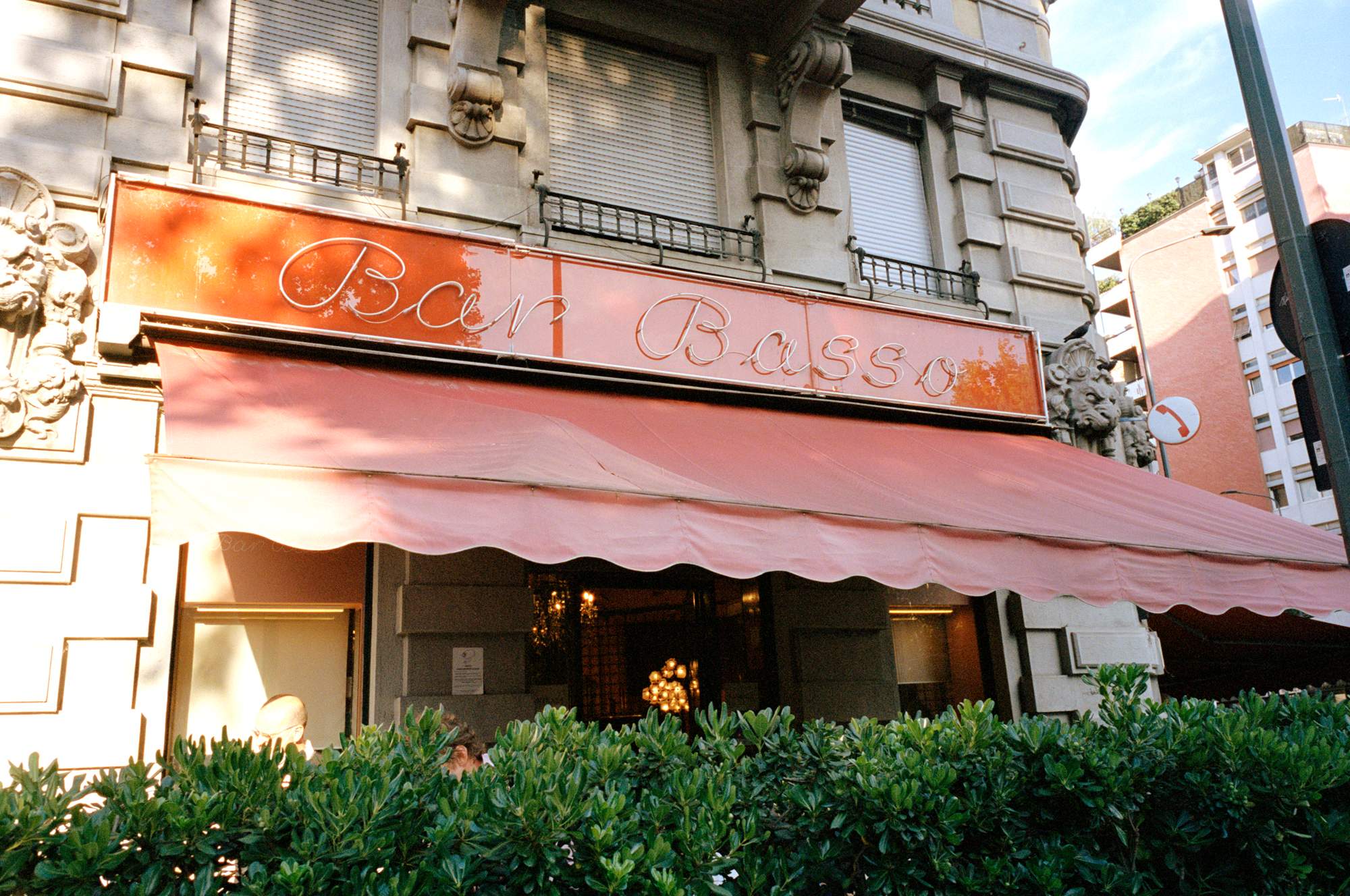
Bar Basso
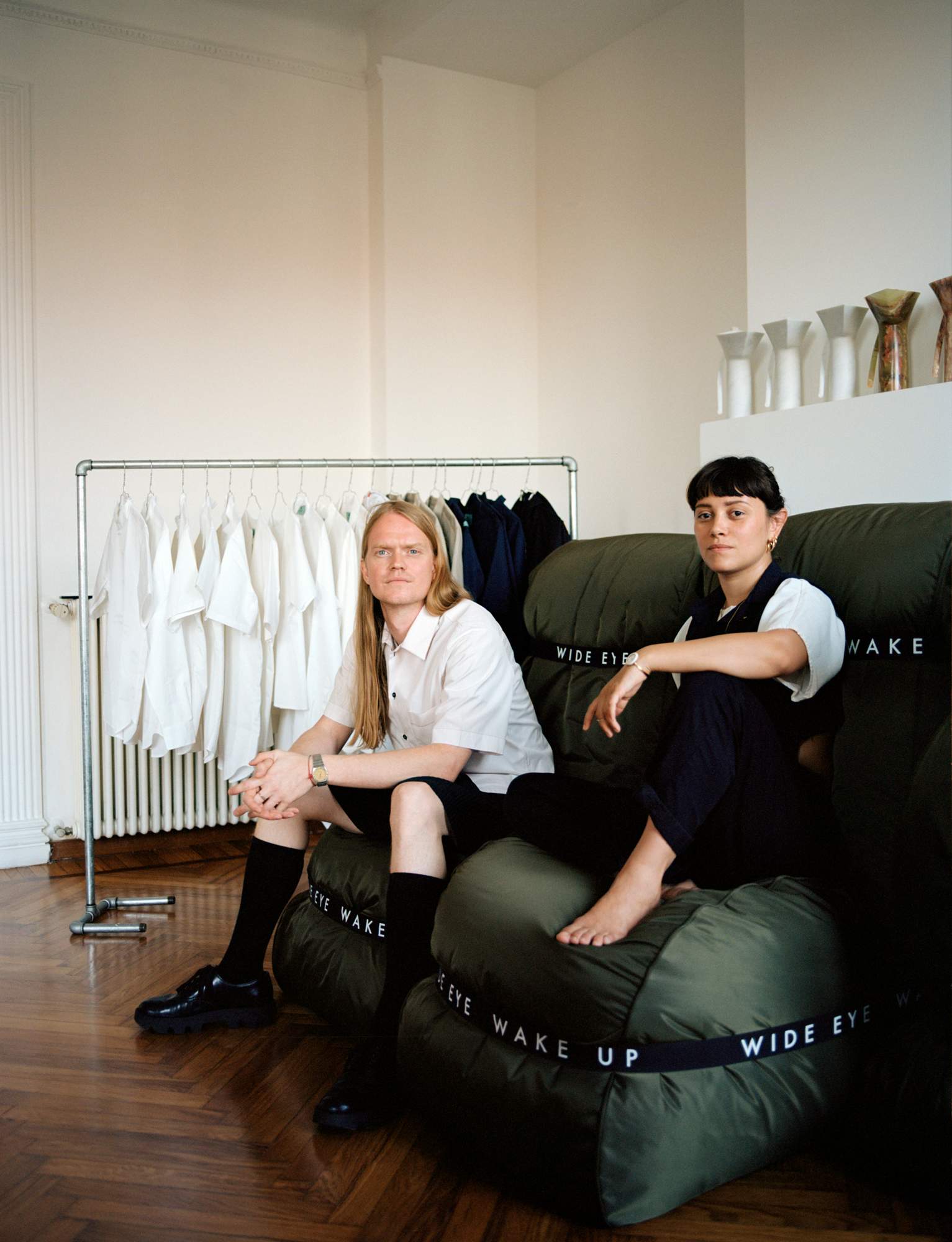
Morten Thuesen and Letizia Caramia

Maurizio Stocchetto, legendary owner of Bar Basso

‘Brassless’, at Milan’s Nilufar Depot, an exhibition curated by Valentina Ciuffi and Studio Vedèt
Grima, who operates design research studio Space Caviar and is creative director at the prestigious Design Eindhoven Academy, says that Milan’s renaissance has been long in the making. “A lot of seeds that were planted a while back have led to Milan exploding onto the European consciousness as an extremely international cosmopolitan environment,” he says. He credits the city’s pioneering architect Stefano Boeri, famous for the green-laden Bosca Verticale building and a number of other urban design successes, and the legacy of the Milan 2015 Expo as two factors. He’s also keen to point out the work of progressive mayor Giuseppe Sala as part of the revival. “Milan is proud of itself and confident of its own identity internationally now, not just within Italy.”
In years past, saying goodbye to Milan was always the hardest part for visiting creative practitioners. But lately for many of them, leaving is becoming less of a pressing reality. This is, at least, the conclusion you might reach at the end of Milanese sojourn as you crack open our second bottle of chilled wine and discuss what’s on the city’s agenda for 2021. Salute!


